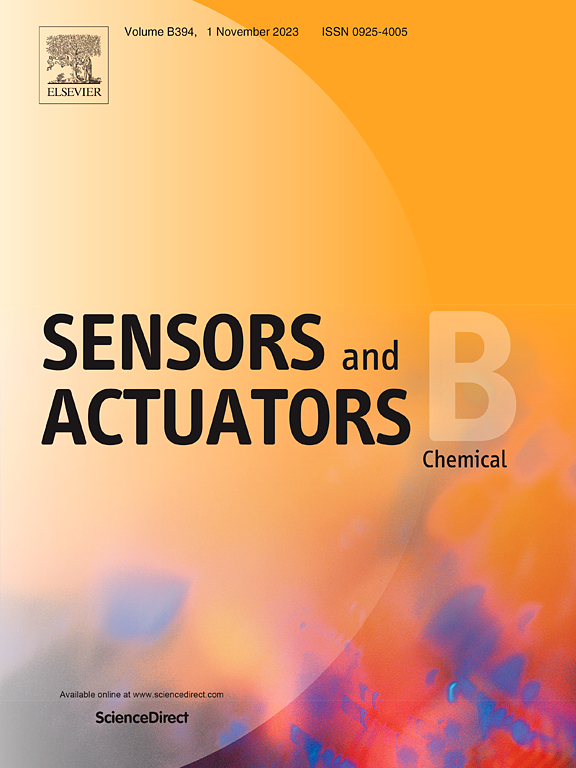一种用于超宽范围检测食品和水样中二氧化硫的两步识别荧光探针
IF 3.7
1区 化学
Q1 CHEMISTRY, ANALYTICAL
引用次数: 0
摘要
亚硫酸氢盐/亚硫酸盐已被批准为世界范围内的食品添加剂。在食物中不当使用HSO3−/SO32−会对人体造成很大的危害。由于食品样品的多样性和复杂性,开发具有广泛检测范围的通用方法以满足实际需要具有很大的挑战和意义。本文首次采用两步识别策略构建探针,具有代表性的香豆素-半花青素荧光探针CouXZ对低浓度(0 ~ 50 μM)和高浓度(100 ~ 700 μM)的HSO3−/SO32−具有良好的选择性和快速的响应能力。基于其超宽范围的传感特性,CouXZ成功地应用于17种食品样品和7种液体样品的SO2残留检测,无需复杂的样品处理。此外,还制备了CouXZ涂层试纸条,建立了便携式手持式紫外灯辅助智能手机传感平台,现场定量分析具有良好的可靠性和准确性。综上所述,两步识别策略可以满足差异化样品的综合检测需求,证明了其强大而广泛的传感应用。本文章由计算机程序翻译,如有差异,请以英文原文为准。

A two-step recognition fluorescent probe for ultra-wide range detection of SO2 in food and water samples
Bisulfite/sulfite has been approved as a worldwide food additive. Improper use of HSO3−/SO32− in food may cause great harm to the human body. Due to the diversity and complexity of food samples, developing universal method with broad detection range to meet practical needs is of great challenge and significance. Herein, for the first time a two-step recognition strategy was employed for probe construction, and a representative coumarin-hemicyanine based fluorescent probe CouXZ showed simultaneously linear response to HSO3−/SO32− of both low-level (0–50 μM) and high-level (100–700 μM), with good selectivity and fast response. Based on its ultra-wide range sensing property, CouXZ was successfully applied to determine SO2 residue in 17 food samples and 7 liquid samples without complex sample treatment. Moreover, CouXZ coated test strips was facilely prepared to establish portable handheld UV lamp assisted smartphone sensing platform, exhibiting on-site quantitative analysis with good reliability and accuracy. In a word, the two-step recognition strategy could meet integrated detection needs of differentiated samples, proving its powerful and extensive sensing applications.
求助全文
通过发布文献求助,成功后即可免费获取论文全文。
去求助
来源期刊

Sensors and Actuators B: Chemical
工程技术-电化学
CiteScore
14.60
自引率
11.90%
发文量
1776
审稿时长
3.2 months
期刊介绍:
Sensors & Actuators, B: Chemical is an international journal focused on the research and development of chemical transducers. It covers chemical sensors and biosensors, chemical actuators, and analytical microsystems. The journal is interdisciplinary, aiming to publish original works showcasing substantial advancements beyond the current state of the art in these fields, with practical applicability to solving meaningful analytical problems. Review articles are accepted by invitation from an Editor of the journal.
 求助内容:
求助内容: 应助结果提醒方式:
应助结果提醒方式:


